The National Institute of Mental Health defines post-traumatic stress disorder (PTSD) as a psychiatric disorder that an individual may develop after exposure to or witnessing a traumatic event. A traumatic event can pose a threat of serious bodily injury or death to the person or others, and individuals experience intense feelings of fear, helplessness, or horror.
Understand that traumatic events do not discriminate against race, ethnicity, gender, age, or sexual orientation, and trauma can happen to anyone from children to adults to seniors. Traumatic events may occur from a single or a one-time event, such as a natural disaster or sexual assault. Other times, traumatic events are prolonged or repetitive over some time, such as war, combat, domestic violence, or sexual abuse in childhood, all of which may lead to developing PTSD.
The National Center for PTSD states that about 6% of the US population will have PTSD at some point in their lifetime. It states that 8% of women develop PTSD compared to 4% of men. Furthermore, because trauma can happen to children and teens too, about 3% to 15% of girls and 1% to 6% of boys also develop PTSD.
Some common misconceptions surround PTSD, such as thinking people can suffer their whole lives from PTSD or that it is a sign of weakness. It is not. But, it is important to learn the signs of post-traumatic stress and when to seek help. To further understand, we will provide you with the common signs and symptoms, when to seek help, the treatments available, and where to seek help.
Signs of Post-traumatic Stress
The National Institute of Mental Health mentions four categories of PTSD symptoms that can vary in severity: intrusion, avoidance, alterations in cognition and mood, and alterations in arousal and reactivity.
- A few good examples of intrusion are flashbacks—when an individual relives a traumatic event—or nightmares. These flashbacks and nightmares are often so vivid that it may feel as if the individual is experiencing the trauma. Oftentimes, there’s no full memory of the event, and other times there are no images of the memory but rather sounds, smells, or tastes.
- Avoidance is when individuals avoid people, places, situations, objects, or anything that may trigger a memory from a traumatic event, often neglecting to talk about the event or their feelings towards it.
- Alterations in cognition and mood refer to experiencing changes in cognitive processes, such as memory, attention span, problem-solving, and decision-making. There are also extreme mood changes, including feelings of fear or horror, guilt, shame, and even thoughts of suicide.
- Alterations in arousal and reactivity refer to experiencing reactions in the body or emotions, including having trouble sleeping, being on edge, having an angry outburst, or being self-destructive (using alcohol or drugs to cope).
PTSD signs and symptoms usually start early after experiencing a traumatic event, within three months of the traumatic event, or even years afterward. To diagnose PTSD, mental health care professionals look for signs that an individual has been experiencing for at least one month. According to the National Institute of Mental Health, the signs and symptoms include the following:
- At least one re-experiencing symptom (intrusion), including flashbacks, nightmares, or frightening thoughts
- At least one avoidance symptom
- At least two arousal and reactivity symptoms
- At least two cognition and mood symptoms
If you or a loved one has been experiencing continuous signs and symptoms of post-traumatic stress disorder, then it is time to seek help.
When to Seek Help for Post-traumatic Stress Disorder
PTSD can interfere with an individual’s work, personal relationships, friendships, sex drive, coping with changes, and memories. At times, some individuals may suffer from PTSD signs and symptoms that mostly go away. However, when those signs and symptoms last for more than a month, it’s time to contact a mental health professional or providers to seek help.
Where to Seek Help
If there’s an emergency or mental health crisis, please ensure you seek help with the following resources:
- 911 + Emergency Room
- 988 Suicide & Crisis Line: call the three-digit code 988
- Veterans Crisis Line: Call the three-digit code 988 and press 1, or send a text to 838255
- Alvarado Parkway Institute: Call our 24/7 crisis line at 619-333-7050
If you’re searching for a therapist or psychologist in your area, the Anxiety & Depression Association of America keeps a directory of therapists who specialize in anxiety, depression, and PTSD. You can search by city, state, or country by completing the “Find a Therapist” form.
The American Psychology Association (APA) also provides a locator for psychologists. You can use their APA Psychologist Locator online. Veterans Affairs also offers several PTSD treatment programs for veterans. You can learn about PTSD care options here.
The Substance Abuse and Mental Health Services Administration (SAMHSA) has a behavioral health treatment services locator for those seeking a treatment facility in their area. They provide facilities in the US and US territories.
Treatments
There are effective PTSD treatments available, including cognitive behavioral therapy, exposure therapy, support groups or group therapy, and medication.
- Cognitive behavioral therapy: This is a form of psychotherapy and the relationship between thoughts, feelings, and behaviors. This type of therapy helps identify negative thoughts, feelings, or behavioral patterns to replace them with positive ones.
- Exposure therapy: This form of therapy helps individuals to overcome feelings of anxiety or fear often associated with PTSD by using repeated exposure to triggers in a controlled and safe environment. During the process, individuals learn to control their fears to better cope.
- Support groups or group therapy: As part of group therapy, a mental health professional meets with a group of individuals who are currently experiencing mental health issues to develop coping skills and participate in group discussions or activities. It provides individuals with an understanding that they are not alone, helping fight against the stigma and isolation.
Learn more about group therapy by reading our post “What are Some Benefits of Group Therapy?”
- Medication: There are a variety of medications that help control the symptoms of PTSD, such as antidepressants, anti-anxiety, or sleeping aids that should only be prescribed by a doctor. Self-medicating may create an imbalance in the body that could make PTSD signs and symptoms worsen overtime.
If you or a loved one are experiencing the signs and symptoms of PTSD, our team at the Alvarado Parkway Institute can help. We treat a range of mental health and addictive disorders. As part of our services, we provide cognitive behavioral therapy, inpatient treatment, and intensive outpatient programs. Find out more by visiting our Center for Mental Health and Addictive Disorders. You can also reach our trained call center staff who is ready to assist you at 619-333-7050 and is available 24/7, or complete our contact form online.
Sources:
- https://www.nimh.nih.gov/health/topics/post-traumatic-stress-disorder-ptsd
- https://www.sciencedirect.com/topics/psychology/traumatic-event
- https://www.ptsd.va.gov/understand/common/common_adults.asp#:~:text=About%206%20out%20of%20every,have%20gone%20through%20a%20trauma.
- https://www.ptsd.va.gov/understand/common/common_children_teens.asp
